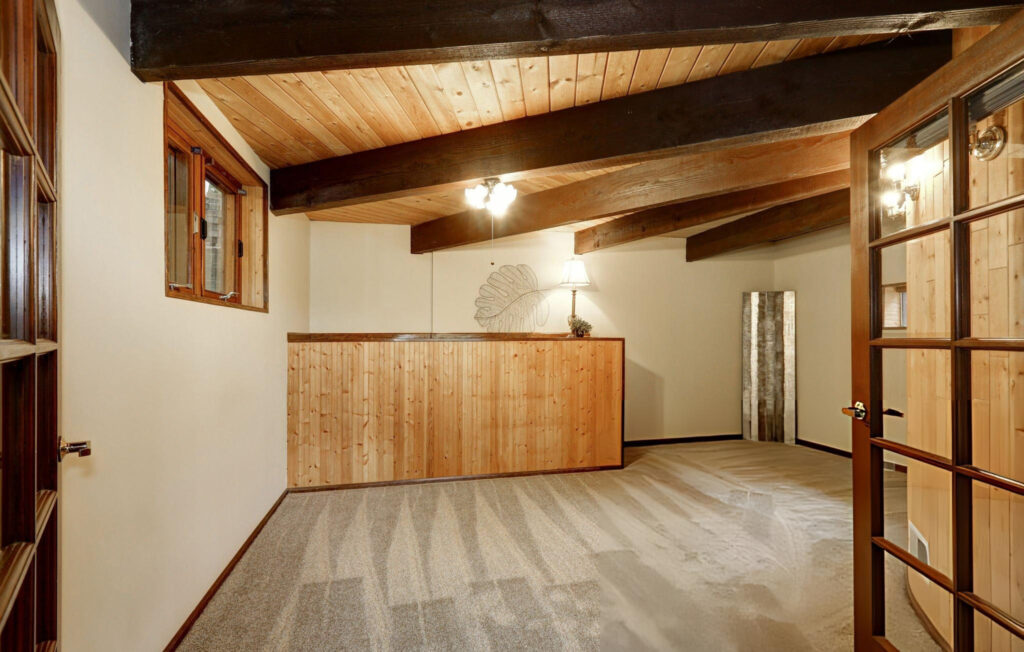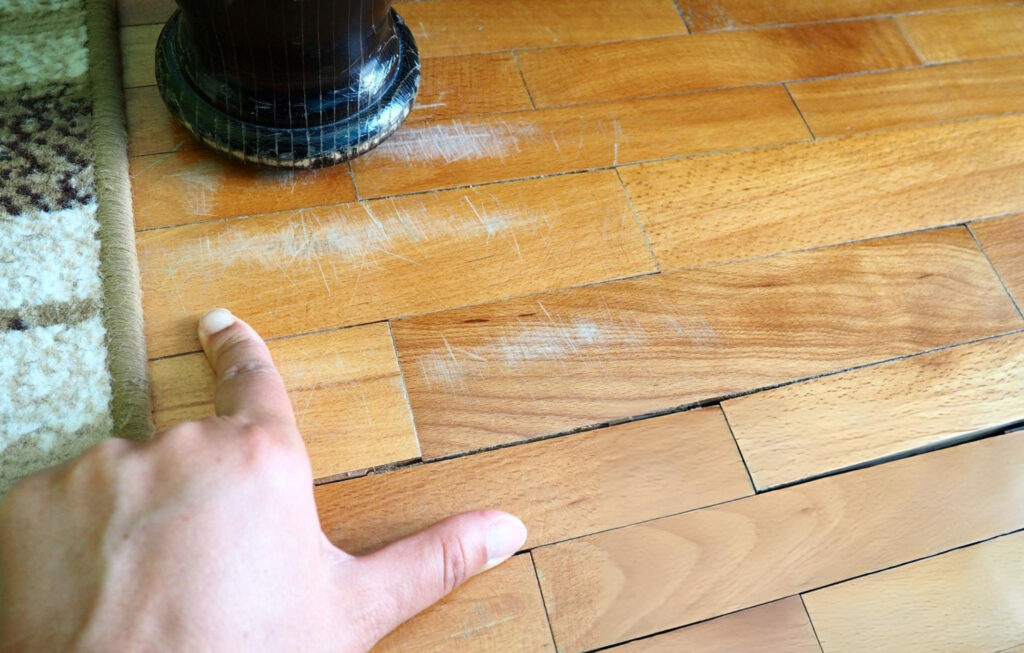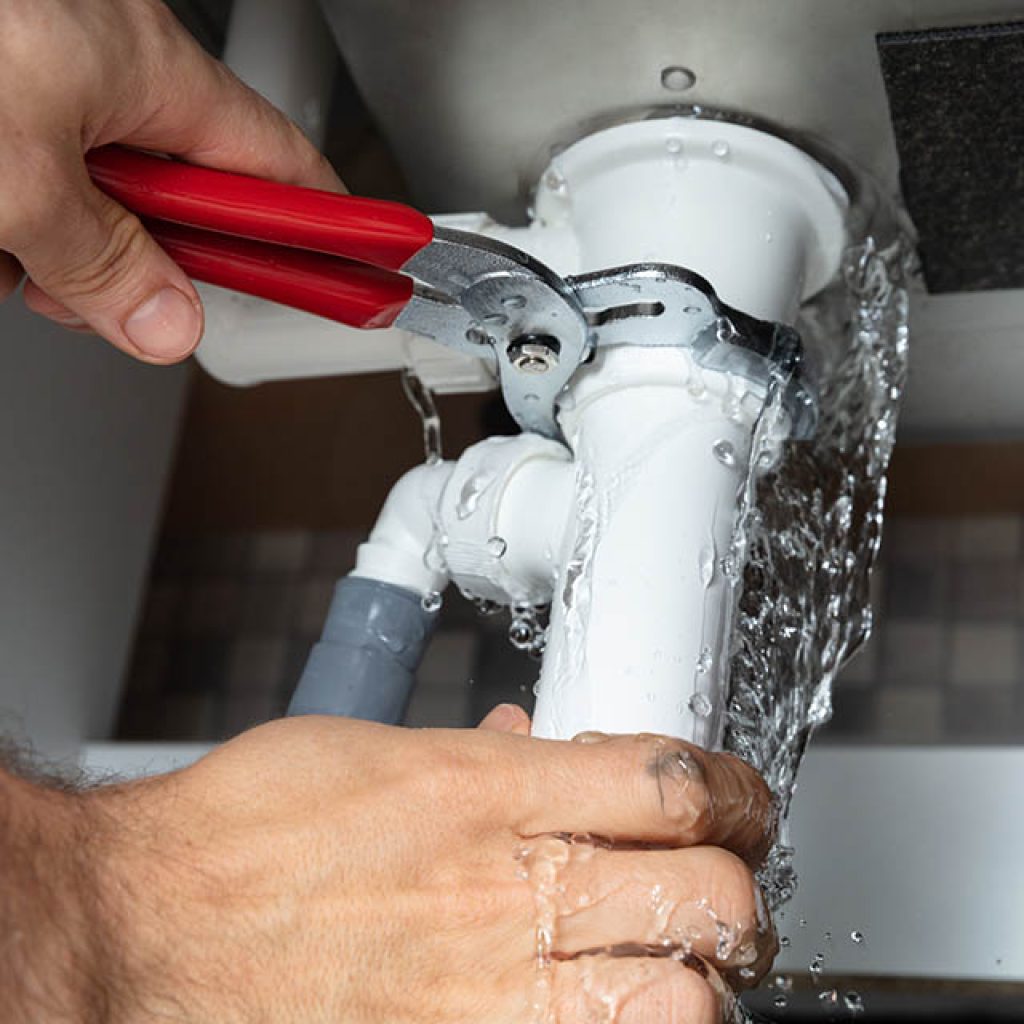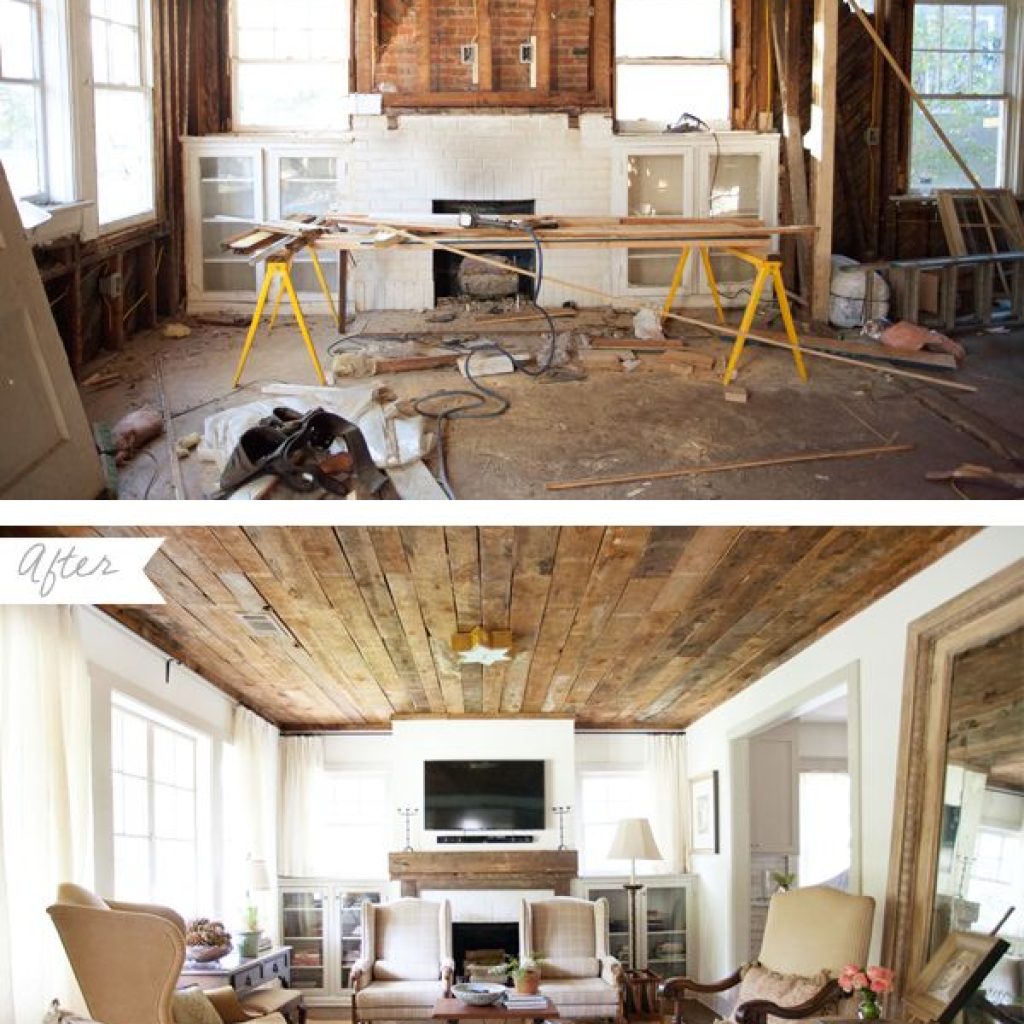Tripped circuit breakers can be frustrating. Diy electrical fixes for tripped circuit breaker can save you from frustration and restore your routine quickly.
Fortunately, you can fix many of these issues yourself. In this blog, we will explore simple DIY electrical fixes for tripped circuit breakers. Understanding why breakers trip can help you address the problem efficiently. Sometimes, it’s just a matter of too many appliances running at once.
Other times, there might be a short circuit or an overloaded circuit. Knowing how to identify and fix these issues can save you time and money. We’ll guide you through easy steps to troubleshoot and resolve common problems.
So, whether you’re a homeowner or a renter, these tips will empower you to manage your electrical system safely.

Credit: www.youtube.com
Introduction To Circuit Breakers
Ever had your lights go out suddenly or the TV just switch off out of nowhere? Chances are, a circuit breaker tripped. Circuit breakers are essential in every home, yet they often remain a mystery to many. But don’t worry! In this section, we’ll explore diy electrical fixes for tripped circuit breaker and help you understand the basics of these crucial devices.
Purpose And Importance
First things first, what exactly is a circuit breaker? A circuit breaker is like the unsung hero of your electrical system. Its main job? To protect your home from electrical overloads and short circuits. Think of it as a safety switch that automatically shuts off the power when it detects a problem.
Why is this important? Well, electrical overloads can cause fires or damage your appliances. By tripping, the circuit breaker prevents these disasters.
So, it’s not just a simple switch, it’s a guardian for your home and family!
Common Causes For Tripping
Now, you might be wondering, what causes a circuit breaker to trip? There are several common reasons:
- Overloaded Circuit: This happens when too many devices are plugged into one circuit. Imagine trying to carry too many groceries at once – something’s bound to drop!
- Short Circuit: This is a more serious issue. It occurs when a live wire touches a neutral or ground wire, causing a surge of electricity.
- Ground Fault: Similar to a short circuit but involves a live wire touching the ground wire or the metal box housing the wires. This can be dangerous and should be fixed immediately.
- Old or Faulty Circuit Breaker: Sometimes, the breaker itself is the problem. Just like any other device, circuit breakers can wear out over time.
Understanding these common causes can help you diagnose the problem quickly and safely. Remember, safety first! Always turn off the main power before attempting any electrical fixes.
Stay tuned as we dive deeper into how you can handle these issues yourself with some DIY tips and tricks. Who knows? You might become the neighborhood’s go-to handyman!
Safety Precautions
“Before you dive into any diy electrical fixes for tripped circuit breaker, let’s talk safety. Electricity is no joke, and taking proper precautions can save you from getting shocked—or worse. Here, we break down the essential safety gear and initial safety checks you need to keep in mind.
Essential Safety Gear
When working with electrical systems, safety gear is your best friend. It’s like having a trusty sidekick that keeps you out of trouble. Here’s what you need:
- Insulated Gloves: These will protect your hands from accidental electric shocks. Think of them as your superhero gloves.
- Safety Glasses: Protect your eyes from any sparks or debris. No one wants an unexpected trip to the eye doctor.
- Rubber-Soled Shoes: These help prevent electric shocks by providing insulation between you and the ground. Plus, they’re comfy!
- Non-conductive Tools: Use tools with rubber or plastic handles to avoid conducting electricity.
Initial Safety Checks
Before you even touch the breaker box, there are a few checks you should run through. Think of it as your pre-flight checklist. Here’s what to do:
- Turn Off Main Power: Always switch off the main power supply before you start. This is your first line of defense against electric shocks.
- Verify Power is Off: Use a voltage tester to double-check that there is no power running through the circuits. Better safe than sorry, right?
- Clear the Area: Make sure the area around the breaker box is dry and free from any flammable materials. Water and electricity are a dangerous mix.
- Identify the Tripped Breaker: Look for the breaker that is in the ‘off’ or middle position. This is your culprit.
Following these safety precautions not only ensures your well-being but also makes the repair process smoother. Remember, a little caution goes a long way in preventing accidents. So, gear up, double-check, and stay safe!
Identifying The Tripped Breaker
“Ever experienced a sudden blackout while you’re in the middle of something important? It’s frustrating, right? Often, this happens because of a tripped circuit breaker. But don’t worry! Diy electrical fixes for tripped circuit breaker start with identifying the issue—and it’s simpler than you think. In this section, we’ll guide you through some easy steps to spot the problem.
Visual Inspection
First things first, let’s perform a visual inspection. Most circuit breaker panels are designed to show the status of each breaker. Here’s what you need to do:
- Check for Misalignment: Look for any breaker that is not in line with the others. This could be a sign of a tripped breaker.
- Position of the Breaker: Typically, a tripped breaker is neither completely in the “off” nor the “on” position. It’s somewhere in between, often labeled “tripped”.
Remember, safety first! If you’re unsure about what you’re seeing, don’t hesitate to call a professional.
Locating The Breaker Panel
Now that you’ve done a visual inspection, it’s time to locate the breaker panel. This is usually a metal box mounted on a wall. It might be in:
- Basement: Many homes have their breaker panels in the basement. It’s often near the main entrance of the basement.
- Garage: Another common location for breaker panels is the garage. Look around the walls near the entrance or storage areas.
- Utility Room: If you have a dedicated utility room, the breaker panel might be there. Check near other electrical appliances.
Once you’ve located the breaker panel, open it carefully. You should see several switches lined up. Identifying which switch has tripped is your next task.
Got it? Great! You’re doing awesome. And if you ever feel overwhelmed, remember, it’s perfectly okay to ask for help. After all, safety is paramount!
Stay tuned for our next section where we’ll guide you on how to reset that tripped breaker. Happy fixing!

Resetting The Circuit Breaker
“It’s a peaceful evening, and you’re just about to settle down with a good book and a cup of tea when, all of a sudden, the lights go out. Don’t panic! This could be a simple case of a tripped circuit breaker. Knowing some diy electrical fixes for tripped circuit breaker can save you a lot of time and trouble.
Let’s dive into the basics of resetting a circuit breaker.
Step-by-step Guide
Resetting a circuit breaker is easier than you might think. Follow these simple steps to get your power back on:
- Turn off all appliances: Before you reset the breaker, make sure to turn off all electrical devices connected to the circuit. This helps prevent a power surge when you reset the breaker.
- Locate the breaker panel: Find the electrical panel in your home. It’s usually in a basement, garage, or utility room.
- Identify the tripped breaker: Look for the breaker that is in the “off” position or halfway between “on” and “off”. It might have a red or orange marker showing that it has tripped.
- Reset the breaker: Flip the tripped breaker to the “off” position first, and then switch it back to the “on” position. You should hear a click when it resets.
And there you have it! Your power should be restored. If the breaker trips again immediately, you might have a bigger issue that needs professional attention.
What To Avoid
While resetting a circuit breaker is straightforward, there are a few things you should avoid to ensure safety and prevent further issues:
- Do not force the breaker: If the breaker won’t reset, don’t force it. This could indicate a serious electrical problem.
- Avoid touching other breakers: Only interact with the breaker that has tripped. Tampering with others can lead to unintended power outages.
- Don’t reset repeatedly: If the breaker trips again after resetting, there could be an underlying issue. Repeatedly resetting it can cause more harm than good.
- Stay safe: If you’re unsure or uncomfortable, it’s always best to call a licensed electrician. Safety first!
Diy electrical fixes for tripped circuit breaker are a handy skill that can save you a lot of hassle. Resetting a circuit breaker is a handy skill that can save you a lot of hassle. With these tips, you’ll be more confident in handling minor electrical issues in your home. Remember, when in doubt, seek professional help. Happy troubleshooting!
Addressing Overloaded Circuits
Have you ever been in the middle of a TV show, and suddenly everything goes dark? Chances are, you have an overloaded circuit. It’s a common issue, but fixing it is simpler than you might think.
In this section, we’ll dive into how to recognize and prevent overloaded circuits to keep your home running smoothly.
Recognizing Overloads
First things first, how do you know if your circuit is overloaded? It’s not as tricky as it sounds. Here are some tell-tale signs:
- Frequent Tripping: If your circuit breaker trips often, it’s a sign of an overload.
- Dim Lights: Do your lights flicker or dim when you use multiple appliances? That’s another clue.
- Warm Outlets: Feeling heat from your outlets? That’s not normal and could mean an overload.
Recognizing these signs early can save you from bigger problems down the line. Imagine baking cookies, only to have the oven shut off halfway through. Not fun, right?
Preventive Measures
Now that you know how to spot an overloaded circuit, let’s talk prevention. Here are some simple steps to keep your circuits in check:
- Spread the Load: Don’t plug too many devices into one outlet. Use multiple outlets for high-power appliances.
- Upgrade Your Circuit: If your home is older, consider upgrading to circuits that can handle more power.
- Unplug Unused Devices: Devices that are not in use still draw power. Unplugging them can reduce the load.
- Use Power Strips Wisely: Not all power strips are created equal. Make sure yours can handle the load you put on them.
Believe me, taking these steps can make a world of difference. Once, I had my coffee maker, toaster, and microwave all running on the same circuit. Guess what happened? Yep, tripped the breaker. Lesson learned!
In conclusion, addressing overloaded circuits isn’t rocket science. By recognizing the signs and taking preventive measures, you can keep your home safe and avoid those annoying blackouts. So next time your breaker trips, you’ll know just what to do.
Fixing Short Circuits
Have you ever been in the middle of watching your favorite show, only to have the power suddenly cut off? You might have a short circuit on your hands. Fixing short circuits can seem daunting, especially if you don’t have much experience with electrical work. But don’t worry, this guide will walk you through the process in simple, easy-to-understand terms. Let’s dive in and get your home back to normal!
Identifying Short Circuits
First things first, how do you know if you have a short circuit? There are a few telltale signs:
- The circuit breaker trips immediately when you turn it on.
- You smell burning or see scorch marks around outlets or switches.
- Lights flicker or dim when certain appliances are used.
If you notice any of these signs, it’s time to investigate further. A short circuit occurs when a hot wire touches a neutral or ground wire, causing a surge of electricity that trips the breaker. Now, let’s look at how to fix it.
Repair Methods
Once you’ve identified the short circuit, the next step is fixing it. Here are some methods you can try:
- Turn off the Power: Safety first! Turn off the main power switch before you start working on any electrical fixes.
- Inspect Wires and Outlets: Check for any damaged or frayed wires. Replace or repair them as needed. Look for any loose connections in outlets and switches.
- Use a Multimeter: If you’re comfortable using a multimeter, it can help you find the exact location of the short circuit. Check for continuity between wires where there shouldn’t be any.
- Replace Faulty Devices: Sometimes, the short circuit is within an appliance or device. Unplug everything from the affected circuit and plug them back in one by one to find the culprit.
- Call a Professional: If all else fails, don’t hesitate to call an electrician. It’s better to be safe than sorry when dealing with electrical issues.
Remember, safety is paramount when working with electricity. Always double-check your work, and if you’re ever in doubt, seek professional help. Fixing a short circuit may seem challenging, but with patience and the right approach, you’ll have your home back to normal in no time.
So, have you ever experienced a short circuit at home? How did you handle it? Share your stories in the comments below!
Dealing With Ground Faults
Ground faults are common issues that can cause a circuit breaker to trip. They happen when electricity takes an unintended path to the ground. This can be dangerous and needs attention. Handling ground faults correctly can help maintain safety in your home.
Signs Of Ground Faults
There are clear signs that indicate a ground fault. One common sign is a tripped breaker. This happens when the circuit is overloaded. Another sign is a burning smell near outlets. This suggests that wiring might be faulty. Flickering lights can also indicate a problem. Additionally, buzzing sounds from outlets are a warning sign.
Repair And Prevention
Fixing a ground fault involves several steps. First, turn off the power at the breaker box. Next, identify the faulty outlet or device. Replace damaged wiring or outlets. If unsure, consult a professional electrician.
Preventing ground faults is crucial. Use GFCI outlets in wet areas like bathrooms. Regularly inspect wiring for damage. Avoid overloading circuits with too many devices. These steps can help prevent ground faults and keep your home safe.
When To Call A Professional
Diy electrical fixes for tripped circuit breaker work well for simple issues, but knowing your limits is just as important. If the breaker keeps tripping or you’re unsure about the cause, it’s best to call a professional. Getting expert help can prevent serious hazards and keep your home safe.
Recognizing Complex Issues
Sometimes, circuit breakers trip repeatedly. This could signal a larger problem. For instance, damaged wiring or faulty appliances might be the cause. These issues are not always visible. Professionals have the tools to diagnose hidden problems.
If multiple breakers trip at once, it’s a red flag. This could indicate an overloaded system. An electrician can assess and balance the load. They ensure your system handles the demand safely.
Safety Considerations
Working with electricity carries risks. Even simple fixes can be dangerous. If you are unsure about any step, it’s safer to call an expert. Electricians have the training to handle electrical issues safely.
Incorrect repairs can lead to shocks or fires. Professionals know the correct methods and safety protocols. They ensure your home’s electrical system remains safe and functional.

Credit: www.youtube.com
Frequently Asked Questions
How Do You Fix A Tripped Circuit Breaker?
To perform diy electrical fixes for tripped circuit breaker, start by turning off all connected devices. Next, locate the breaker panel and find the tripped breaker. Switch it fully to the ‘off’ position, then flip it back to ‘on.’ Finally, check if the devices are working properly.
If the breaker trips again, consult an electrician.
How Do I Find What Is Tripping My Circuit Breaker?
Check for overloaded circuits, faulty appliances, or damaged wiring. Unplug devices, reset the breaker, and test each item individually.
What To Do Before Resetting A Tripped Circuit Breaker?
Turn off all appliances and lights on the affected circuit. Check for any visible damage or burnt smells. Ensure hands are dry and stand on a dry surface. Firmly push the breaker switch to the off position, then to the on position.
If the breaker trips again, consult an electrician.
How To Reset The Entire Breaker Box?
Turn off all individual breakers. Switch the main breaker to the off position. Wait a few seconds. Switch the main breaker back on. Turn on individual breakers one by one.
Conclusion
Diy electrical fixes for tripped circuit breaker can be straightforward if done correctly. Start by ensuring your safety—switch off the main power. Locate the tripped breaker and reset it. If it trips again, there may be a more significant issue at hand. In such cases, it’s advisable to call a professional.
With these tips, you can confidently handle minor electrical issues. Keep your home safe and your circuits functioning. Always prioritize safety in every DIY task. Happy fixing!












1 thought on “Diy Electrical Fixes for Tripped Circuit Breaker: Quick Solutions”
Pingback: Affordable DIY Plumbing Fixes for Leaks: Quick and Easy Solutions - Sweet Home Zone